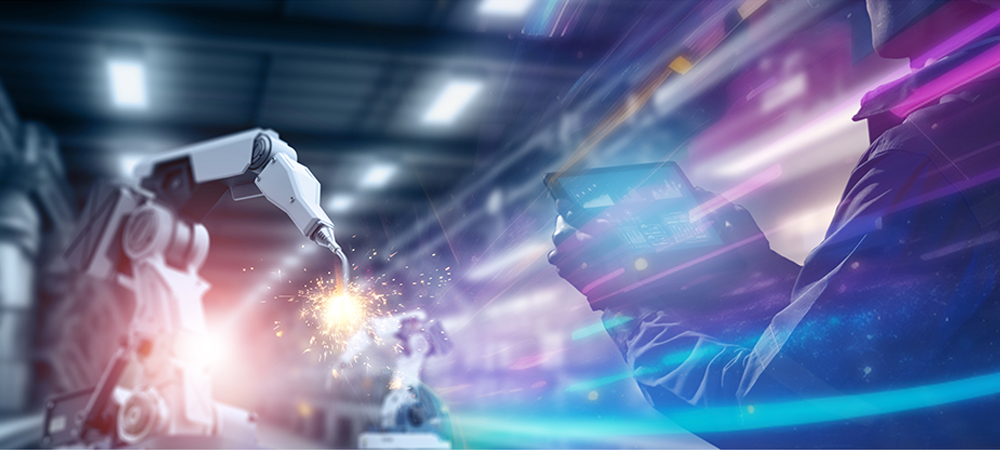Alexey Lebedev, Vice President – Pacific, AVEVA, says that as the hype dissipates, the real work begins and a flood of new use cases is being unleashed.

One of the biggest moves the metaverse has made this year – and potentially in its short existence – is achieving break-out from the hype cycle that has driven its development and growth to date.
The hype cycle has and hasn’t been good for the metaverse. It put the concept on the map, established interest and drove experimentation, all of which is good; but it also muddied the waters on metaverse, and particularly what the technology could achieve in a non-consumer context.
That’s an important point, because the metaverse is often spoken of as if it’s an amorphous consumer-grade “world”.
While there’s undoubtedly been a lot of effort invested into that space, it’s the business-grade applications of the metaverse – in particular, the advent of the industrial metaverse – where the concept and technology has demonstrated real value.
That nuance is often lost in public-facing commentary about the metaverse. It’s also meant that characteristics of the consumer-grade metaverse are often (incorrectly) projected onto the industrial metaverse. That has resulted in some myths forming about the industrial metaverse – what it is and isn’t, how to access it, who ‘owns’ it and what it’s best used for.
Given the gates are now open for work to ramp up and progress to be made, the timing could not be any better to lay the top four myths to rest.
1. The industrial metaverse is just virtual reality
Early demonstrations of the consumer-grade metaverse made it appear to be just a merger of physical and virtual worlds with virtual reality technology at the center.
This bears only passing similarity or resemblance to the industrial metaverse.
While still being defined, the industrial metaverse is a collaborative and immersive digital environment that users can control and develop, blending the physical and digital world in ways that help redefine innovation in sectors such as manufacturing, energy and infrastructure.
From modelling and prototyping new designs to simulations of physical deployments and the use of extended reality in the field, the industrial metaverse incorporates many different technologies to support a wide range of use cases.
Importantly, virtual reality is only one technology within the industrial metaverse. Other technologies such as Augmented Reality, cloud computing, the Internet of things and AI are as, or considerably more, critical to its success.
2. You can only access the industrial metaverse with a VR headset
Following on from the first myth, it’s important to recognise that industrial metaverses extend beyond AR/VR headsets as the only methods of accessing them.
Industrial metaverses are available and accessible on smartphones, tablets and desktops – the same devices that business and operations staff already use to access software and cloud services in their day-to-day work.
To collaborate in the industrial metaverse, workers must be able to use any device they want, connect to the necessary software, view trustworthy data from their Digital Twin and cooperate in one shared application. In some use cases, office workers and colleagues at the plant may interact within the same virtual environment – but one may use a tablet and the other a headset.
The industrial metaverse will initially be accessed as extensions to Internet browsers and messenger apps. Over time, it’s likely that devices will natively run immersive technologies – just as biometrics are embedded in today’s smartphones.
3. One company owns the industrial metaverse
To avoid fragmentation, it made sense in the consumer space to work towards a single, or small number, of metaverses with global reach. But this model does not work for businesses; they want more control of the systems they use, in no small part to protect the commercial sensitivity of their assets (including data) and operations.
There’s no single industrial metaverse. Instead, each organisation creates its own industrial metaverse. This could be the collection of its operational assets or simply represent each asset individually. Companies building out a new industrial metaverse will be able to build their own custom solutions, where access is strictly controlled with role-based privileges and security protection in the same way that access to any existing IT or OT system is currently protected.
4. The industrial metaverse is years away and expensive to develop
The industrial metaverse harnesses existing technology in new ways. While these component technologies of the industrial metaverse may already be in use internally to some extent, it is often not in an integrated way.
Industrial metaverse is about using a reliable and consistent Digital Twin Driven by industrial data and AI-infused capabilities to deliver a seamless, connected, multi-person experience.
Current use cases for industrial metaverse technologies lie in maintenance and repair, industrial design and prototyping, quality control in manufacturing and collaboration, communication and workforce training.
In the business world, the potential of the industrial metaverse is already apparent and its development hasn’t slowed. Companies are experiencing the industrial metaverse today as an always-on world where real factories, machines, data and people are connected in virtual ways – and are already reaping the benefits.


